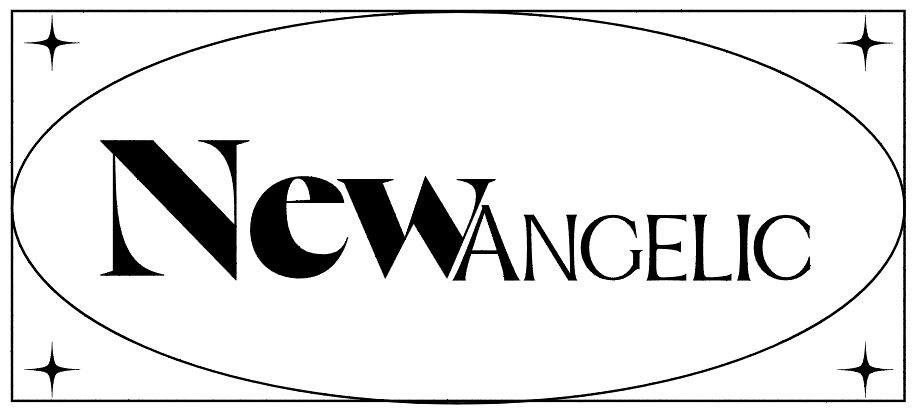Sound healing meditation is the practice of using harmonious sounds to promote inner peace and wellness. It involves the use of specific instruments, music, tones, and other sonic vibrations to balance and heal the body, mind, and spirit. Sound healing creates a therapeutic atmosphere that promotes deep rest, nervous system rebalancing, and emotional release.
Sound therapy treatments can be done individually or in a group setting, and they have been used for thousands of years as a form of therapy to improve energy levels, mental clarity, creativity, and relationships. It is a safe, affordable, and effective way to enhance overall well-being.
Key Takeaways:
- Sound healing meditation uses harmonious sounds to promote inner peace and wellness.
- It involves the use of specific instruments, music, tones, and other sonic vibrations.
- Sound healing creates a therapeutic atmosphere for deep rest, nervous system rebalancing, and emotional release.
- Sound therapy treatments can be done individually or in a group setting.
- Sound healing has been used for thousands of years and is a safe, affordable, and effective way to enhance overall well-being.
Benefits of Sound Healing Meditation
Sound healing meditation offers a wide range of benefits for your overall well-being. By utilizing various sound healing techniques and sound therapy, it can help you find relief from stress and promote relaxation. Through the use of harmonious sounds, sound healing has the power to bring balance to your mind, body, and spirit.
One of the primary benefits of sound healing meditation is its ability to reduce stress. The specific frequencies of sound waves used in sound therapy directly affect your brain and nervous system, promoting deep relaxation and reducing anxiety. This can lead to a calmer state of mind, improved sleep quality, and a greater sense of inner peace.
Sound healing is also known to have a positive impact on your physical well-being. It can help alleviate pain by stimulating the body’s natural healing response. Additionally, the vibrations from sound healing instruments penetrate deep into the tissues, improving circulation and metabolism. This can aid in detoxification and promote overall cellular regeneration and repair.
Benefits of Sound Healing Meditation:
- Promotes relaxation and reduces stress
- Improves sleep quality
- Alleviates pain and stimulates healing
- Enhances overall well-being
By incorporating sound healing meditation into your wellness routine, you can experience these benefits and more. It is a gentle and non-invasive practice that can be easily integrated into your daily life, providing a powerful tool for self-care and holistic healing.
| Benefits of Sound Healing Meditation | Description |
|---|---|
| Promotes relaxation and reduces stress | Specific frequencies of sound waves affect the brain and nervous system, leading to deep relaxation and reduced anxiety. |
| Improves sleep quality | Sound healing can help improve the quality of your sleep, leading to more restful nights and increased overall well-being. |
| Alleviates pain and stimulates healing | The vibrations from sound healing instruments penetrate deep into the tissues, promoting circulation, detoxification, and cellular regeneration. |
| Enhances overall well-being | Sound healing meditation offers a holistic approach to wellness, supporting the balance of mind, body, and spirit. |
How Does Sound Healing Work?
Sound healing harnesses the power of vibration to restore balance and promote healing in the body, mind, and spirit. It works by using specially tuned instruments that emit vibrations at different frequencies. These vibrations interact with the frequencies within our bodies, creating a harmonizing effect.
One of the key aspects of sound healing is entrainment. Entrainment occurs when the vibrational frequency of an external source, such as a musical instrument, matches the frequency of our cells. This synchronization helps our cells remember their optimal vibrational state, promoting healing and balance.
Cymatics, another important principle of sound healing, refers to the movement of tissues in response to sound vibrations. When sound waves pass through our bodies, they create patterns of movement in our cells and tissues. This gentle internal massage can stimulate circulation, metabolism, and the body’s natural regenerative processes.
Examples of Sound Healing Techniques
“Sound healing is a transformative practice that taps into the inherent connection between sound and our well-being. By working with sound vibrations, we have the power to restore harmony and promote healing on a deep level.”
The use of sound healing instruments, such as Tibetan singing bowls, crystal singing bowls, drums, and bells, further amplifies the therapeutic effects. Each instrument produces unique vibrations and tones that interact with our body’s energy field, chakras, and meridians. By listening to or playing these instruments, we can create a sonic environment that supports healing and relaxation.
Overall, sound healing is a holistic practice that taps into the innate power of sound and vibration. It offers a gentle yet profound way to promote well-being, reduce stress, and enhance our connection to ourselves and the world around us.
Table: Sound Healing Techniques and their Effects
| Technique | Main Instrument(s) | Effects |
|---|---|---|
| Sound Baths | Gongs, Tibetan Singing Bowls | Deep relaxation, stress relief |
| Guided Sound Meditations | Various instruments | Enhanced visualization, emotional release |
| Drumming | Hand drums, frame drums | Rhythmic grounding, energy release |
| Bells | Bell instruments, handbells | Energetic clearing, heightened awareness |
| Vocal Toning | Voice | Energetic balancing, self-expression |
Types of Sound Healing Sessions
Sound healing sessions come in various forms, each offering a unique experience and effectiveness in promoting relaxation and healing. Here are some of the most popular types:
Sound Baths
A sound bath is a common type of sound healing session where musicians play instruments such as gongs, Tibetan singing bowls, and other instruments to create a meditative experience. The soothing sounds and vibrations help participants relax and release tension, promoting a sense of deep relaxation and well-being.
Guided Sound Meditations
Guided sound meditations involve a musician playing specific instruments while guiding participants through visualizations or meditations. These sessions combine the power of sound with guided imagery to create a deeply immersive and transformative experience. It allows individuals to explore their inner landscapes and promote emotional healing.
Chanting and Kirtan
Chanting and kirtan are group practices of singing and chanting mantras. This type of sound healing session taps into the power of vocal vibrations to create a sense of unity and connection. Chanting mantras can promote relaxation, reduce stress, and elevate mood, allowing participants to experience a deep sense of peace and inner harmony.
Vibroacoustic Therapy
Vibroacoustic therapy uses low-frequency sound waves to stimulate the body’s healing response. During a session, participants lie on a mat or bed embedded with speakers that emit vibrations. These vibrations penetrate the body, promoting relaxation, reducing pain, and improving overall well-being.
Acutonics
Acutonics is a type of sound healing that involves placing tuning forks on various parts of the body to stimulate acupuncture points. These tuning forks create harmonic vibrations that resonate with the body, helping to restore balance, relieve pain, and promote energy flow.
Binaural Beats
Binaural beats are created by playing two slightly different frequencies in each ear, resulting in the perception of a rhythmic pulsing sound. This type of sound healing session aims to induce specific brainwave states, such as relaxation or focus. Binaural beats can be used for meditation, stress reduction, and enhancing mental clarity.
These are just a few examples of the diverse range of sound healing sessions available. Each type offers its own unique benefits, and individuals may find different sessions resonate with them in different ways. Exploring various types of sound healing can help individuals find the approach that best supports their well-being.
Sound Healing Instruments
Sound healing sessions incorporate a variety of instruments that create soothing and harmonious sounds to promote relaxation and healing. Each instrument has its unique qualities and contributes to the therapeutic experience of sound healing. Here are some of the commonly used sound healing instruments:
- Tibetan Singing Bowls: These hand-hammered metal bowls produce beautiful bell-like sounds that resonate deeply within the body, helping to restore balance and harmony.
- Crystal Singing Bowls: Made of quartz crystal, these bowls produce clear tones that are known for their calming and healing properties. They are often used to cleanse and purify the energy field.
- Tambura: This traditional Indian instrument features four strings and creates a resonant harmonic tone. It is commonly used in Indian classical music and meditation practices.
- Bamboo and Native American Flutes: These flutes produce soothing melodies that evoke a sense of tranquility and relaxation. They are often used to enhance meditation and mindfulness practices.
- Bells: Bells are occasionally played during sound healing sessions to clear negative energy and create a sense of space and clarity.
- Handpans and Steel-Tongue Drums: These percussion instruments produce melodic and rhythmic sounds that are deeply grounding and can induce a meditative state.
These instruments, along with others like gongs, chimes, and rain sticks, are carefully selected and played by sound healing practitioners to create a therapeutic atmosphere that promotes deep relaxation, stress relief, and overall well-being.
“The vibrations produced by sound healing instruments penetrate deep into the tissue, improving circulation, metabolism, and stimulating regeneration and repair mechanisms.” – Sound Healing Expert
Conclusion
Sound healing meditation offers a unique and effective way to achieve inner peace and wellness. By utilizing specific instruments, music, tones, and sonic vibrations, sound healing allows you to balance and heal your body, mind, and spirit. Throughout history, sound healing has been used as a therapeutic practice to enhance overall well-being.
The benefits of sound healing meditation are numerous. It helps you relax and release stress, anxiety, and tension. It promotes deep rest and nervous system rebalancing, allowing you to achieve a state of relaxation and tranquility. Sound healing techniques can also improve your energy levels, mental clarity, creativity, and relationships.
There are various sound healing techniques and instruments available for you to explore. Whether you choose to attend a sound bath, guided meditation, or chanting session, each experience offers its own unique benefits. Find the technique that resonates with you and start your journey toward tranquility today!
Can Sound Healing Meditation and Sound Bath Meditation be Used Interchangeably?
Sound healing meditation and sound bath meditation can be used interchangeably, although they have their unique attributes. Both share the same purpose – to promote relaxation and mental clarity. Sound bath meditation basics involve using sound frequencies to induce a meditative state, while sound healing meditation focuses on the therapeutic effects of sound vibrations.
FAQ
What is sound healing meditation?
Sound healing meditation is the use of harmonious sounds, such as specific instruments, music, and tones, to promote inner peace and wellness.
What are the benefits of sound healing meditation?
Some benefits of sound healing meditation include relaxation, stress relief, improved sleep, and pain relief. It also offers various sound healing techniques, such as sound baths, guided sound meditations, chanting and kirtan, vibroacoustic therapy, and binaural beats.
How does sound healing work?
Sound healing works through vibration, entrainment, and cymatics. The vibrations from sound healing instruments penetrate deep into the tissue, stimulate circulation, and enhance cellular regeneration and repair mechanisms.
What are the types of sound healing sessions?
There are various types of sound healing sessions, such as sound baths, guided sound meditations, chanting and kirtan, vibroacoustic therapy, acutonics, and binaural beats. Each session offers a unique experience in promoting relaxation and healing.
What instruments are used in sound healing?
Instruments commonly used in sound healing include Tibetan singing bowls, crystal singing bowls, tambura, bamboo and Native American flutes, bells, handpans, and steel-tongue drums. Each instrument contributes to the therapeutic experience of sound healing.
In conclusion, what are the benefits of sound healing meditation?
Sound healing meditation offers numerous benefits, including relaxation, stress relief, improved sleep, and pain relief. It is a powerful practice that promotes overall well-being and allows individuals to find inner peace and wellness.








